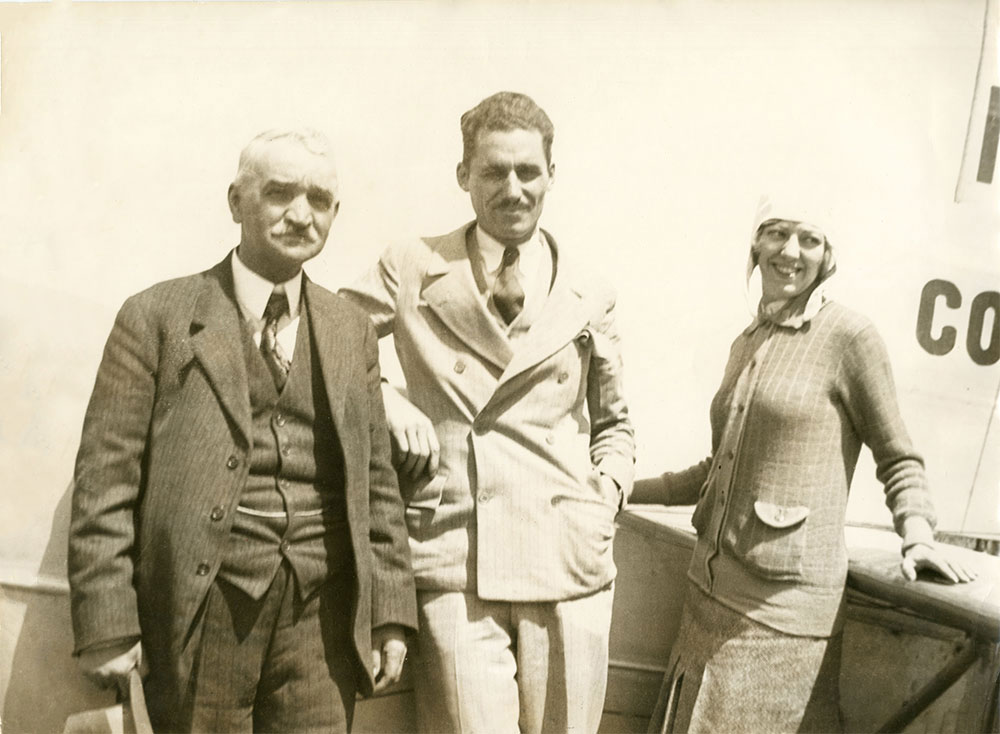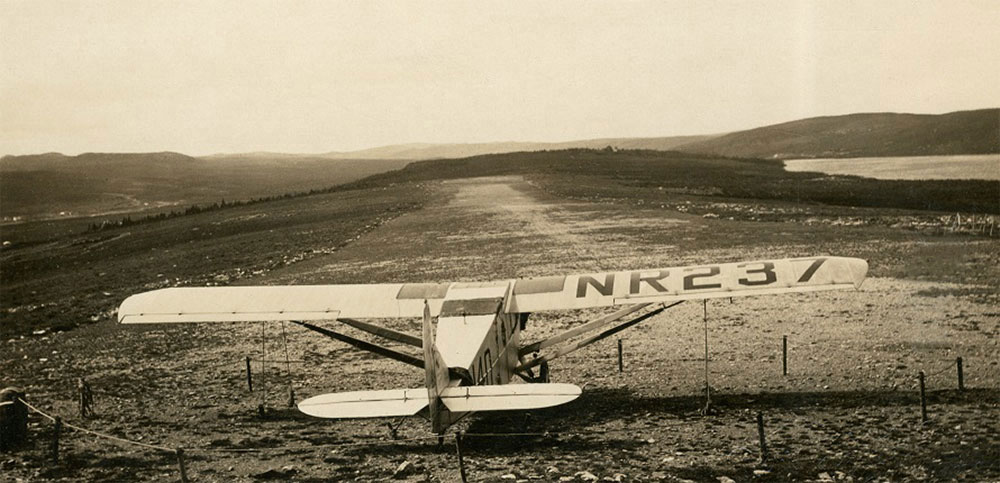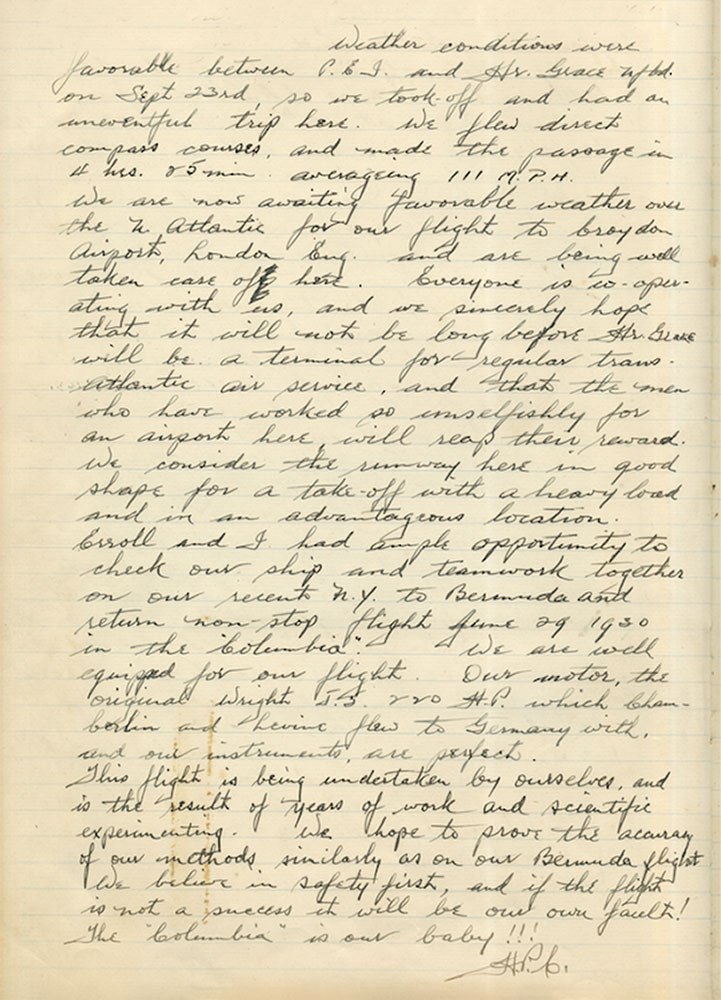Frequent Flyer: The Columbia (1928-30)
In June 1928, Mabel Boll and Amelia Earhart arrived in Newfoundland competing to become the first female passenger to cross the Atlantic.
Earhart, with pilot Wilmer Stultz, flew into Trepassey on the Friendship. Her competitor Boll landed in Harbour Grace with pilot Oliver LeBoutillier on the Columbia. Boll was a well-known Broadway socialite, who attracted great media attention.
Both were grounded in Newfoundland as they waited for better weather. Earhart and her team stayed in Trepassey, close to the plane. However, Boll and her team visited St. John’s, over an hour away, to be celebrated by dignitaries at a Knights of Columbus reception.
As the weather cleared, Boll’s team remained cautious about safety. Earhart’s team decided to leave based on weather reports from American ice patrols.
On June 17, 1928, Earhart departed Trepassey and became the first woman to cross the Atlantic by aircraft. Disappointed, Boll flew back to the United States, but not before donating $500 to the Harbour Grace airstrip to maintain what she called a ‘world-class runway.’
The Columbia returned to Harbour Grace again in 1930. This time, Captain Erroll Boyd of the Royal Air Force and Lieutenant Harry Connor of the US Naval Reserve were at the controls. Boyd and Connor had just made their first non-stop return flight from New York to Bermuda and were ready for a new challenge.
On their way from Montreal to Harbour Grace, poor weather forced Boyd and Conner to land near Charlottetown, PEI. Grounded for a week, Boyd noted in the logbook that it was “a pleasant stay there, even tho’ it was enforced…we were loathe to leave the beautiful girls of PEI behind but will return there upon the completion of this effort.“ They arrived in Harbour Grace on September 23, 1930.
Transatlantic attempts were rare this late in the year, and poor weather grounded the pair once again. On October 9, they finally took off from Harbour Grace. They had even ditched their radio, in an attempt to carry the maximum fuel possible for their trip, 460 gallons.
In addition, they carried 300 letters, which would become the first air mail from Canada. The Columbia safely landed at Tresco, on the Isles of Scilly, but had to contend with strong headwinds, rain squalls, and fog.
This trip marked the second transatlantic flight for the Columbia and the first successful transatlantic flight for a Canadian, which earned Boyd the nickname “the Lindbergh of Canada.”




